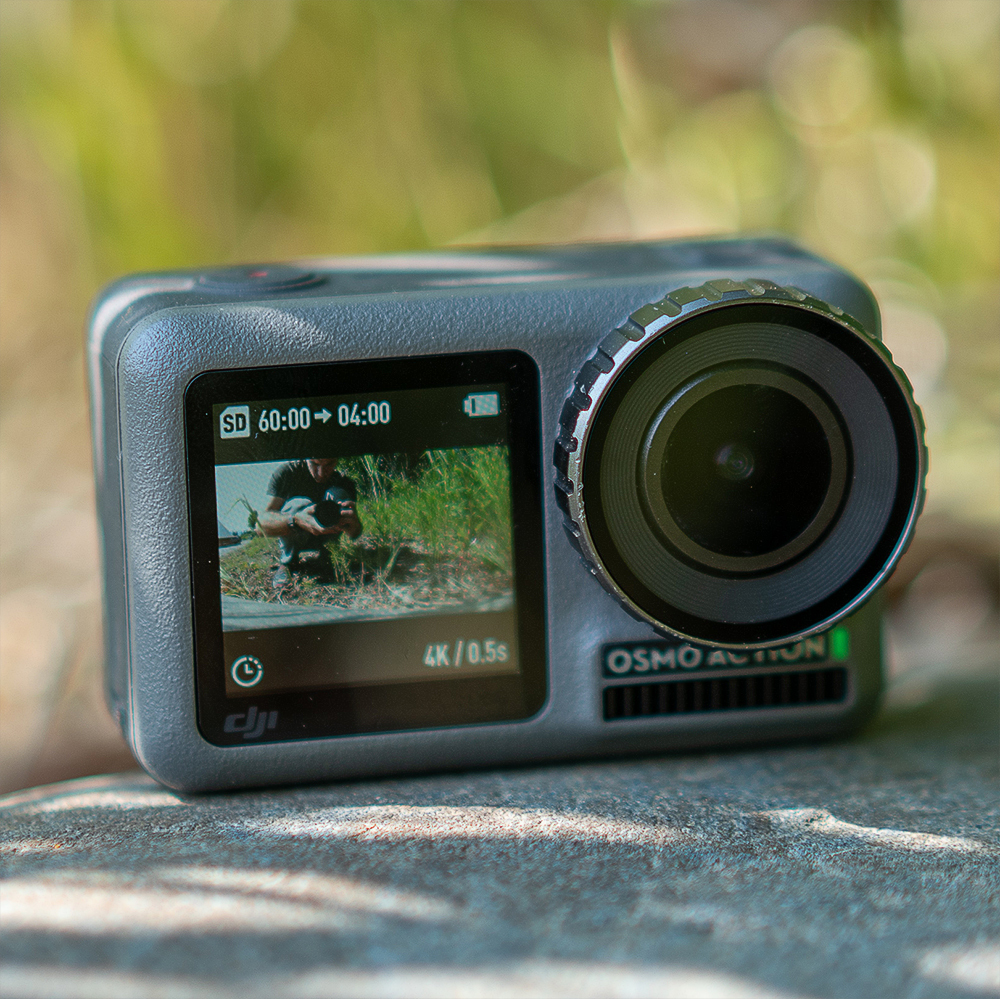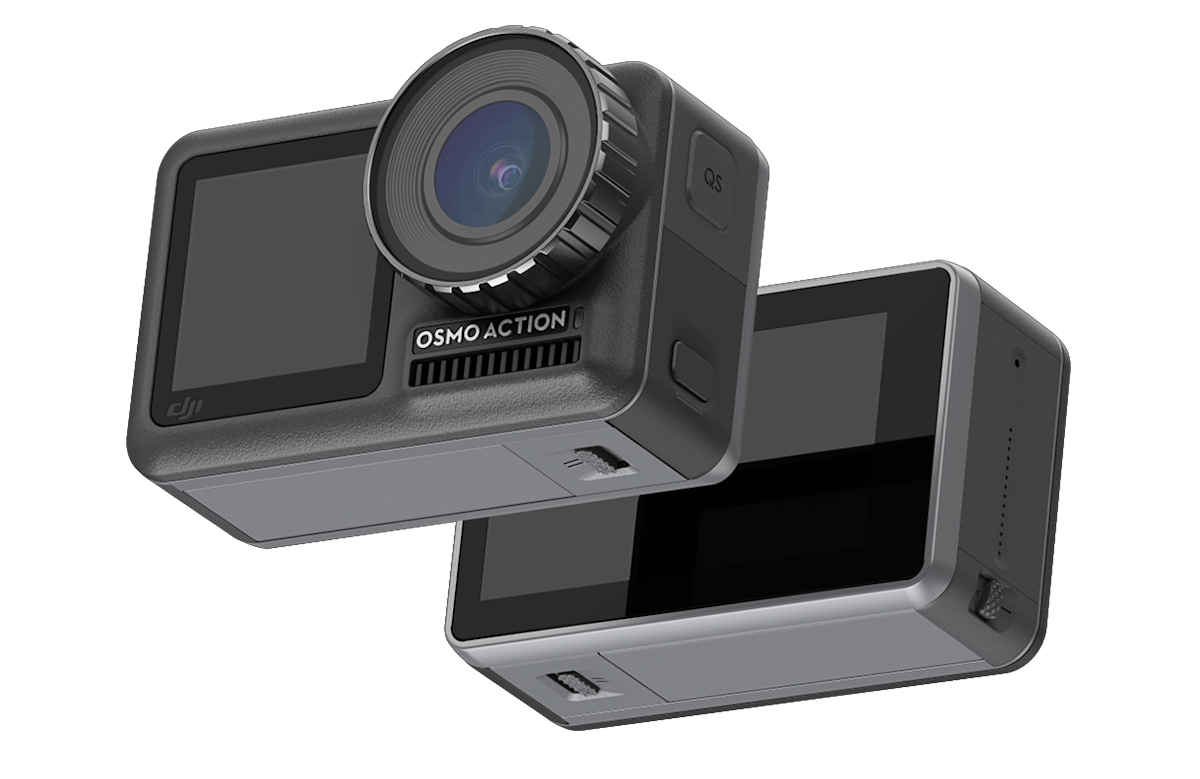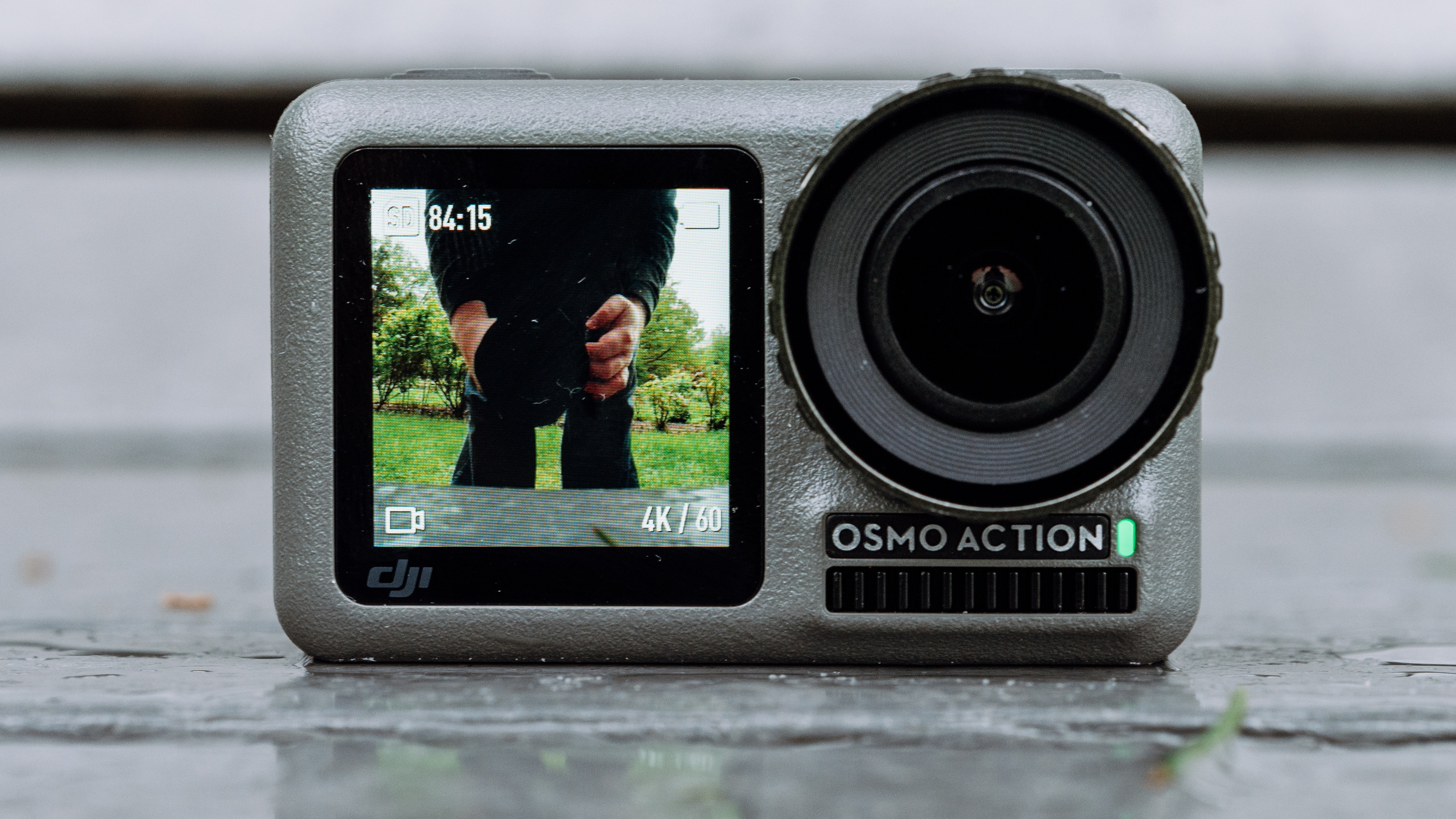

For example, if you are shooting at 60fps then your shutter speed would be 1/20, or if your frame rate is 120 fps then your shutter speed would be 1/40, etc. If you wanted to adjust the settings manually to capture slow motion videos, the frame rate must be adjusted to triple your shutter speed. Most action cameras do not have a slow motion setting, and instead require you to change the shutter speed yourself.
#DJI OSMO ACTIO 1080P#
In addition, on the Osmo Action camera you can shoot your videos in slow motion at 1080p or 720p. If you are shooting 30 fps however, you would change the shutter speed to 1/60th, or 50 fps your shutter speed would be 1/100th, in order to create proper motion blur.

Most cinematic videos are captured at 24 fps, so when you are filming you would want to double this number and change your shutter speed to 1/50th of a second. In order to maintain continuity within the film and make the motion seem natural to the human eye, the shutter speed should be set to double your frame rate. More impressively, a horizon lock been added so that no matter how the Action 2 tilts during filming, it’ll always capture footage from the correct angle.The 180 degree rule of shutter explains the relationship between shutter speed and frame rate when recording motion in video. To keep up with the competition, the DJI Action 2 now features the upgraded RockSteady 2.0 which should allow the camera to offer far more stable footage than that of its predecessor.

Rocksteady 2.0 with horizon lockĪt the time of the DJI Osmo Action’s release, our review stated that “DJI’s RockSteady stabilisation largely matches GoPro’s HyperSmooth, which has been the gold standard for smoothing out action camera videos since it landed.” For high-speed sports like mountain biking and skiing, all of these extra bells and whistles should be a Godsend. The jump in framerate means that you can now get 4x slow motion at 4K 120fps and 8x slow-mo when shooting in 1080p 240fps. The DJI Osmo Action had a respectable cap of 4K 60fps, and while this is still a decent standard for most casual content creators, the DJI Action 2 has been given a bump up to 4K 120fps, making it better equipped at filming fast-paced footage. These modules are also just as small as the DJI Action 2 itself, making it absolute breeze to switch up your filming style on the go. If you need more juice to get through a long shoot then adding the power module can nab you up to 180 minutes of film time. If you want to do some vlogging, then simply snap on the touchscreen module and you’re away. The Action 2 itself is a small square block that can fit in the palm of your hand and weighs just 56 grams, but a magnetic strip on the underside of the camera gives you the opportunity to add a whole bunch of accessories into the mix. The modular designĭJI clearly thought that the Insta360 One R was on to something, because the Action 2 now features a completed modular design. Having had early access to the device ahead of its launch, these are the five new things you need to know about the DJI Action 2. Still, if you’re the proud owner of the original Osmo Action, or even just someone looking to buy their first action camera, then you might be wondering exactly how the new Action 2 differs from its predecessor. 2019’s DJI Osmo Action is still a tremendous device, but with the Action 2 having been unveiled, DJI’s ready to take the competition back to GoPro in a whole new way. In the world of action cameras, GoPro has always remained king, courtesy of yearly updates and groundbreaking stabilisation, and while many companies have tried to take that crown, it’s only DJI that has come closest to doing so. DJI has unveiled its latest action camera, the DJI Action 2, and there’s a lot to know about this major revamp over the original DJI Osmo Action.


 0 kommentar(er)
0 kommentar(er)
